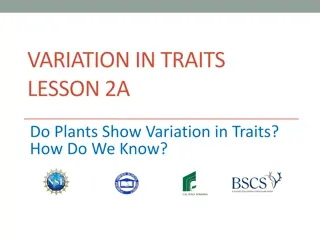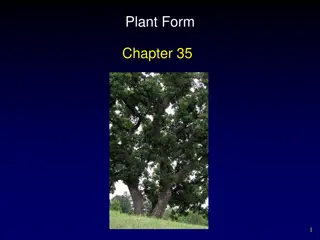Understanding Plant Communities and Their Characteristics
Plant communities are essential components of natural ecosystems, comprising plants and animals that thrive in specific environments. They exhibit species diversity, various growth forms, self-sufficiency, dominance of certain species, and succession patterns. Communities can be classified based on plant formations, such as rainforests, grasslands, and deserts.
Download Presentation

Please find below an Image/Link to download the presentation.
The content on the website is provided AS IS for your information and personal use only. It may not be sold, licensed, or shared on other websites without obtaining consent from the author. Download presentation by click this link. If you encounter any issues during the download, it is possible that the publisher has removed the file from their server.
E N D
Presentation Transcript
Plant community Plant community is a part of the biotic component comprising a plants and animals living in any natural area. A plant community forms an assemblage of plants in particular environment, which is suitable for proving at least the minimum requirements of individual in community. The social groupings of plant species are called plant community of which plant is the fundamental basic unit.
Characteristics of a community All communities have certain general characteristics which are listed below: 1. Species diversity In community, there may be different organisms (plants, animals, microbes) which differ taxonomically from each other. The number of these species varies in different communities.
2. Growth form and structure In a community, there occur major categories of growth forms such as trees, shrubs, herbs and mosses. These different growth forms in space and time determine the stratification or vertical layering of the community.
3. Self-sufficiency Each community is nutritionally well balanced. There may be both autotrophic and heterotrophic individuals in a community.
4. Dominance In a community, all the species may not be equally important. There are always a few species which exert major controlling influence by virtue of their size, number etc., in determining the nature of community. These species are known as dominant species.
5. Succession In a community develops as a result of directional change in its composition as well as in environmental properties.
Classification of community According to some ecological communities can be classified to: 1.Plant formation A fully developed or climax community within a climatic region is called plant formation. The major plant formations or the world are rain forests, deciduous forests, coniferous forest, grasslands, deserts, mangroves.
2. The associations A climax community consist of two or more sub-divisions, called associations. The number of associations in any plant formation is determined by a number of sub-climates within the general climates of the formation in that area. Each association is marked by one or more dominant species peculiar to it.
3. The consociation Due to local varieties in temperature, precipitation and edaphic factors, several plant communities may develop within a plant association. Each community in the association may be dominated by a single species and such communities with a single dominant species are known as a consociation. In one association, there may be many consociations, each with a single dominant species.
4. The society A society is a community characterized by one or more sub- dominant species. In areas with dominance of consociation, many other species are found growing in abundance. These species influence the communities present un the area and are called sub- dominants. Societies may be: a.An aspect society b.A layer society
Aspect societies are found in places with marked seasonal variations and are common in deserts and grasslands. Different species may appear which may differ in duration of their vegetative growth and flowering. Thus, each species can form its own society. Layer societies, on the other hands, are common in forest formation which show complex stratification. Under the influence of dominant species, the trees of the forest formation, one or more layers of shrubs may develop followed by layers of herbaceous communities and ground communities of mosses, lichens, algae etc. in the forest.

























